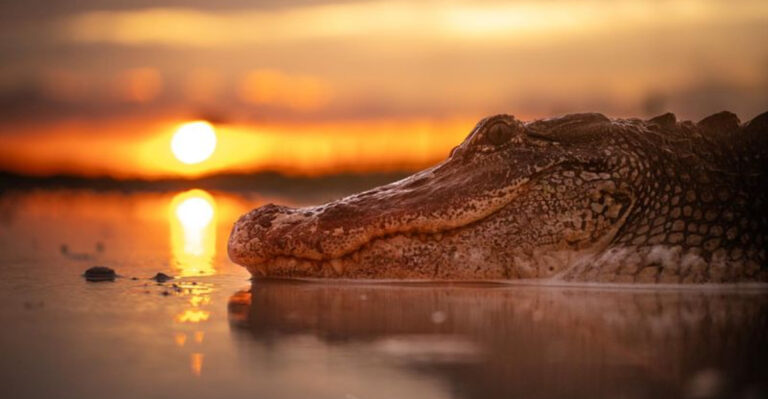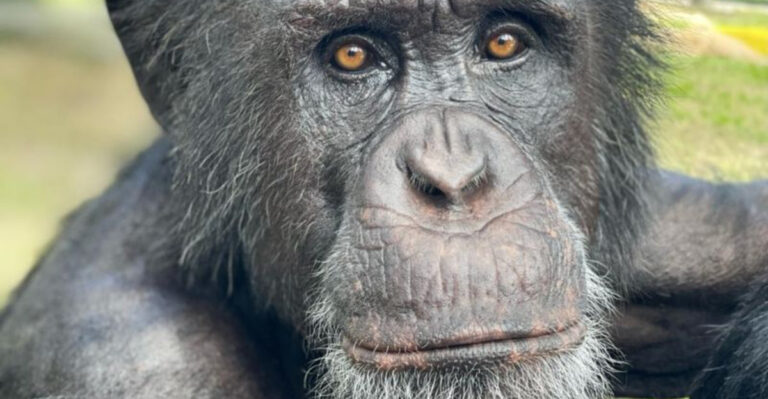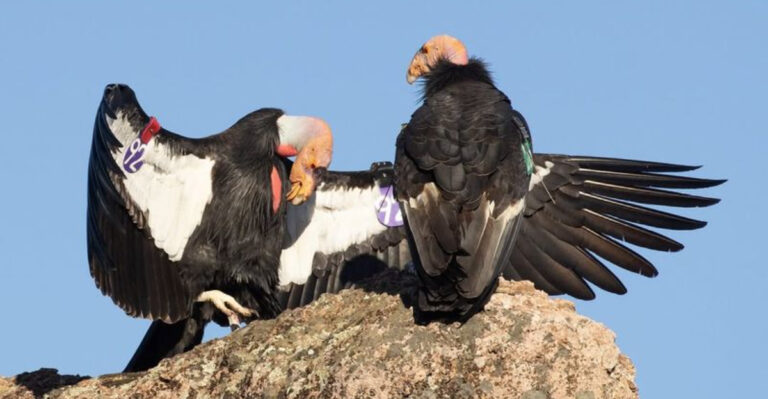14 Facts About The Largest Great White Shark Ever Spotted In The Atlantic
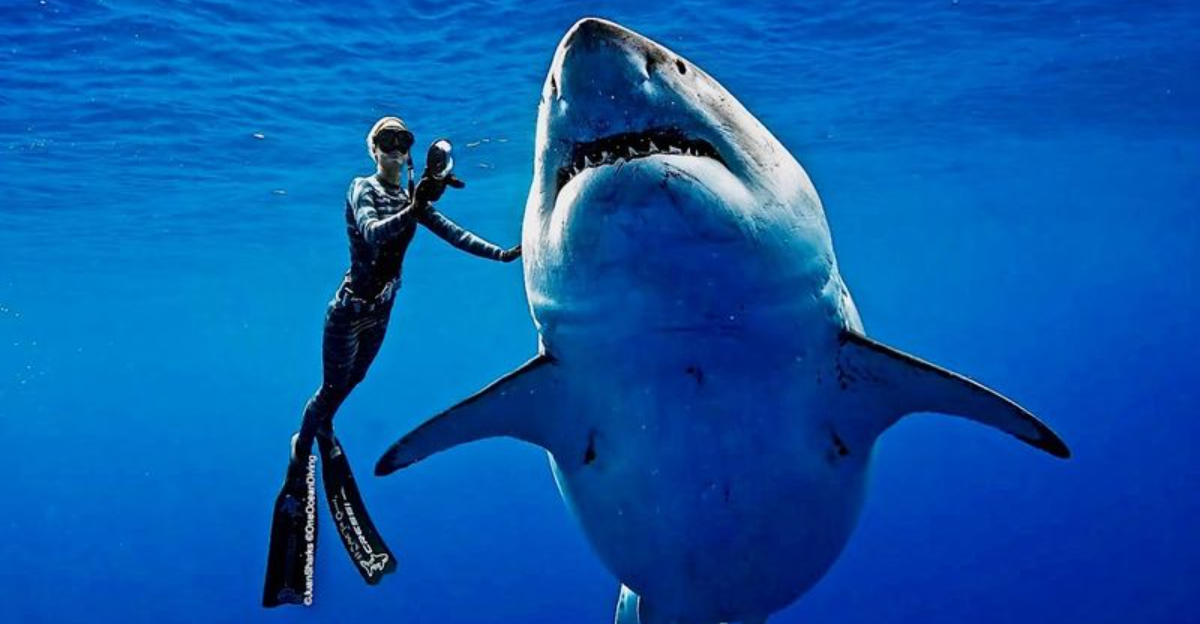
The great white shark is one of the most iconic and fearsome creatures of the ocean, but when one of these giants is spotted, it truly captures attention. In this article, we’ll dive into 14 fascinating facts about the largest great white shark ever spotted in the Atlantic.
From its size to its behavior, this remarkable predator has left marine biologists and shark enthusiasts in awe. Join us as we explore what makes this great white so extraordinary and the incredible journey it has taken across the ocean’s vast waters.
1. What We Know About Great White Sharks
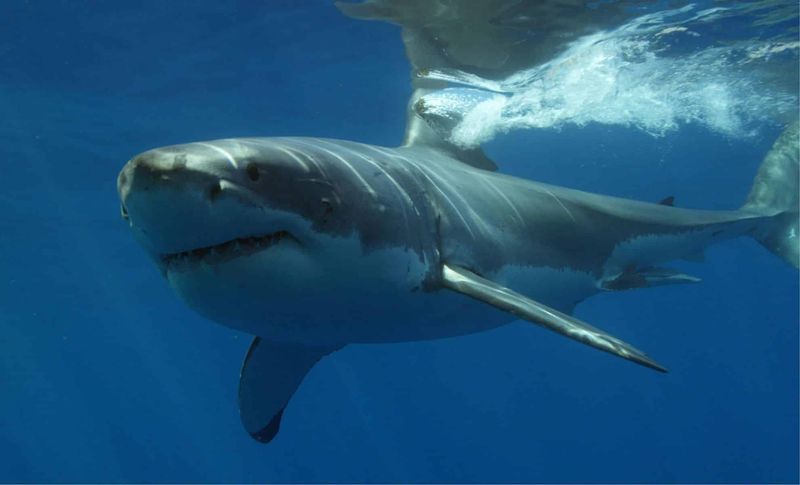
Great white sharks have long been subjects of both fear and fascination. With their sleek, powerful bodies and razor-sharp teeth, they embody the perfect combination of grace and danger.
Despite their fearsome reputation, these sharks are vital to the marine ecosystem, helping maintain the balance of species by preying on the weak and sick.
The largest great white ever recorded in the Atlantic exemplifies these remarkable traits, standing as a testament to the species’ adaptability and resilience.
Their anatomy is perfectly adapted for hunting. With a keen sense of smell and acute hearing, they can detect prey from miles away, making them efficient predators.
This ability to sense and track prey has enabled the largest great white to thrive in the diverse and challenging environments of the Atlantic, illustrating the importance of these sharks in maintaining ecological balance.
Beyond their hunting prowess, great white sharks are intelligent and curious creatures. They often investigate objects with gentle nibbles, showcasing a surprisingly inquisitive nature.
Understanding these attributes helps debunk many myths surrounding these magnificent animals, painting a picture of a species that is both feared and respected. This knowledge is crucial in changing perceptions and fostering a more informed view of these incredible predators.
2. The Magnitude Of The Atlantic’s Largest Great White
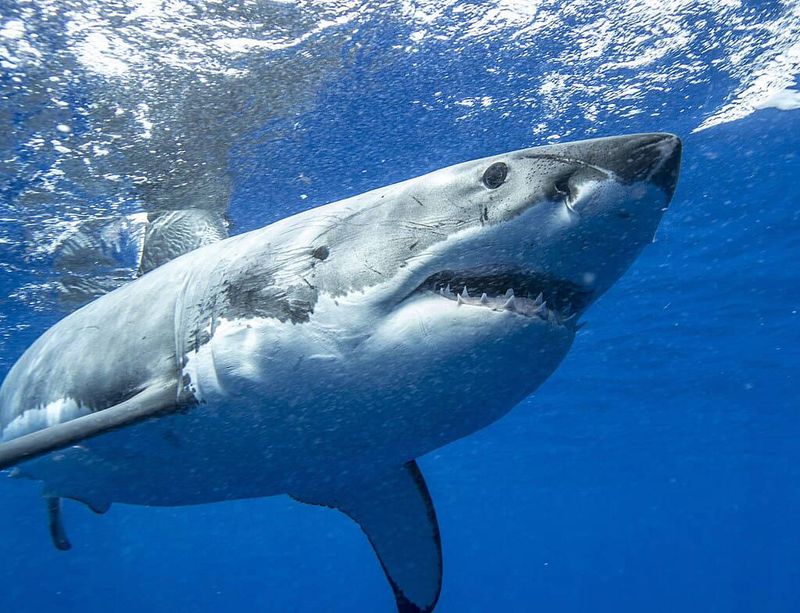
The largest great white shark ever spotted in the Atlantic is a testament to nature’s awe-inspiring capabilities. At an estimated 20 feet in length and weighing over 5,000 pounds, this behemoth dwarfs most marine life.
Its sheer size is both a marvel and a reminder of the ocean’s vast, untamed wilderness. The sight of such a creature is rare, capturing the imagination of those fortunate enough to witness it.
Size plays a crucial role in the survival of these giants. A larger body allows for greater energy reserves, enabling long migrations across the Atlantic.
This endurance is vital for tracking prey and navigating the ocean’s dynamic environments. The largest great white’s size is not just a spectacle but a crucial adaptation for thriving in an unforgiving habitat.
The magnitude of this shark also sparks curiosity and collaboration among scientists worldwide. It challenges our understanding of growth limits within the species, encouraging further research into genetics, nutrition, and environmental factors.
By studying these aspects, researchers aim to uncover secrets behind the extraordinary size of the Atlantic’s largest great white, contributing valuable insights into the life and evolution of these majestic predators.
3. Tracking And Studying The Giant
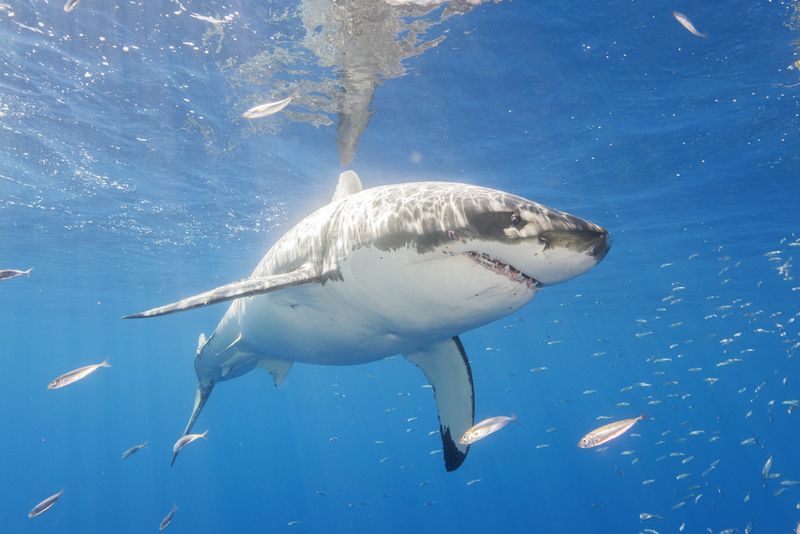
Tracking and studying the Atlantic’s largest great white shark offers unparalleled insights into the life of these enigmatic creatures. Researchers employ cutting-edge technology, such as satellite tags and underwater drones, to monitor the shark’s movements and behaviors.
This real-time data collection is crucial for understanding migration patterns, hunting strategies, and social interactions within shark populations.
The process of tagging such a massive shark is both challenging and exhilarating. It requires precision and expertise to safely attach tracking devices, ensuring minimal disruption to the shark’s natural behaviors.
Once tagged, the data collected reveals fascinating details about the shark’s life, offering clues about its preferred habitats and seasonal movements in the vast Atlantic.
Studying this giant also helps scientists assess the impact of environmental changes on great white sharks. By analyzing data over time, researchers can identify trends and predict how these changes might affect shark populations in the future.
These efforts are vital for conservation strategies, as they provide the knowledge needed to protect these iconic predators and ensure their survival in an ever-changing ocean.
4. The Life Cycle Of A Great White Shark
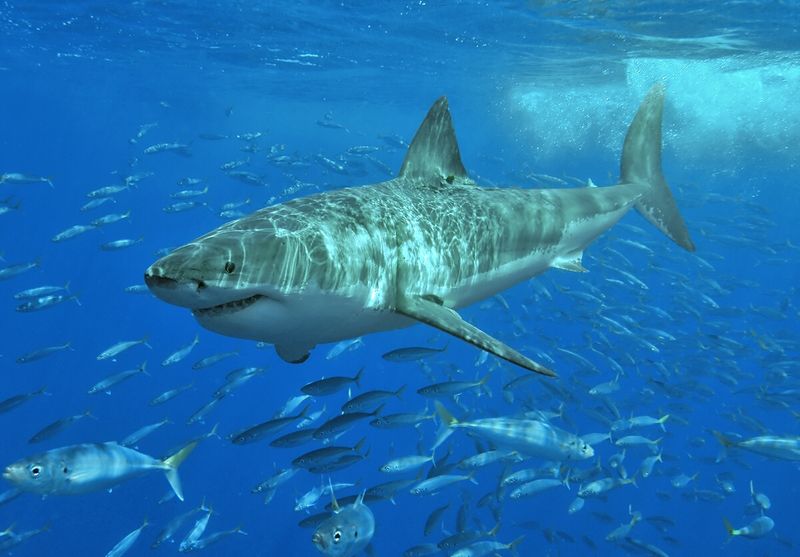
The life cycle of a great white shark is a fascinating journey marked by growth, adaptation, and survival. Starting as pups, these sharks are born in litters of two to ten, already equipped with a full set of teeth and the instincts needed to hunt and survive.
The early years are critical, as young sharks must learn to fend for themselves in an ocean teeming with threats and competition.
As they mature, great whites continue to grow, reaching full size over several decades. This slow growth rate is a key factor in their long lifespan, allowing them to hone their hunting skills and adapt to environmental changes.
The Atlantic’s largest great white exemplifies this growth, with its enormous size serving as a record of its successful navigation through the challenges of ocean life.
Understanding the life cycle of great white sharks is essential for conservation efforts. By studying different stages of their development, researchers can identify critical habitats and threats, ensuring targeted protection measures.
This knowledge is crucial for preserving the species and maintaining the ecological balance of the Atlantic Ocean, highlighting the interconnectedness of life within the marine world.
5. Diet And Feeding Rituals
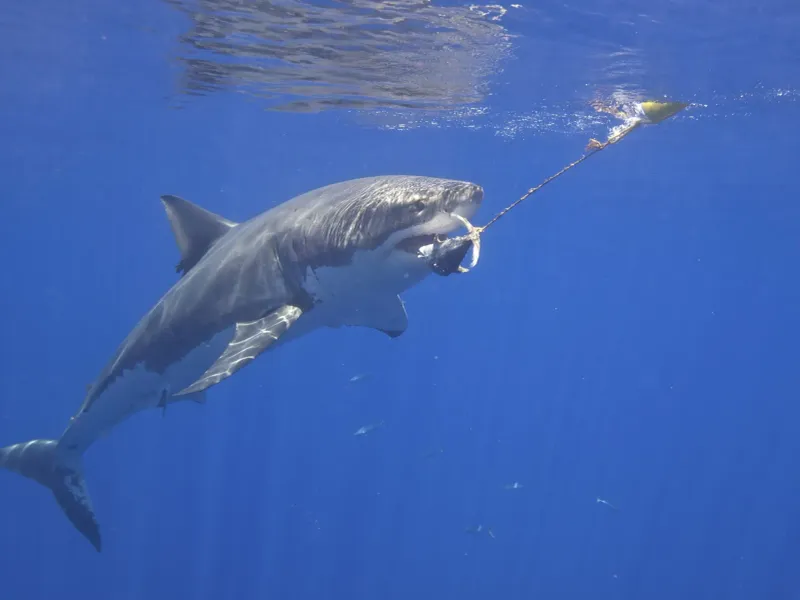
The diet and feeding rituals of the largest great white shark in the Atlantic are both intricate and awe-inspiring. These apex predators primarily feast on seals, dolphins, and other marine mammals, showcasing their prowess as hunters.
The process of hunting is a blend of stealth, speed, and precision, as the shark silently approaches its prey before launching a powerful ambush.
Feeding rituals also involve a fascinating social hierarchy among sharks. When multiple sharks are attracted to the same prey, the largest and most dominant individuals often claim the prime feeding spots.
This hierarchy ensures that the biggest and strongest sharks maintain their status as top predators, underscoring the importance of size and strength in the ocean’s food chain.
Understanding these feeding behaviors provides valuable insights into the marine ecosystem. By studying the diet of great white sharks, researchers can infer the health and abundance of prey populations, offering a glimpse into the broader ecological dynamics.
This information is vital for conservation efforts, as it highlights the interconnected relationships between predators and prey, ensuring the sustainability of the Atlantic’s rich and diverse marine life.
6. Habitat Preferences
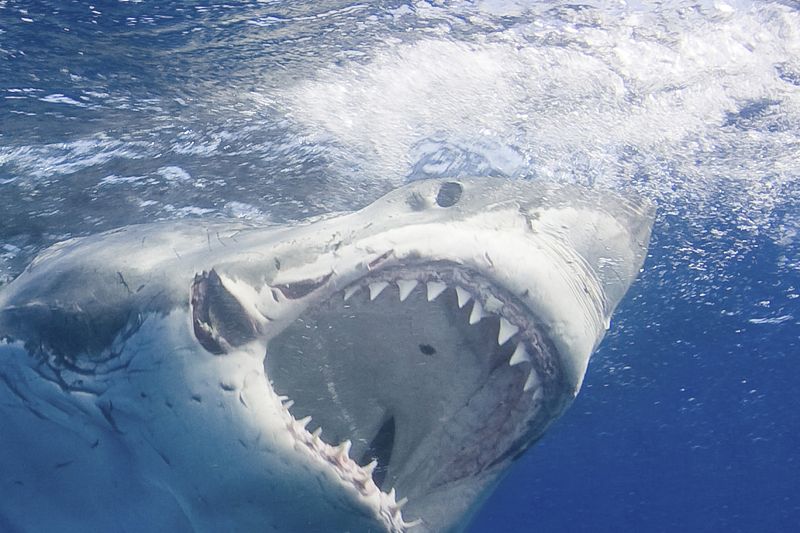
The habitat preferences of the largest great white shark in the Atlantic reveal much about its adaptability and survival strategies. These sharks are known to inhabit coastal and offshore waters, often preferring regions with abundant prey and favorable water temperatures.
Their presence is commonly observed around seal colonies, where food sources are plentiful, and near oceanic islands that offer rich feeding grounds.
Migratory behavior is another critical aspect of their habitat preference. The largest great whites undertake long journeys across the Atlantic, following prey migrations and seasonal changes in water temperature.
This ability to traverse vast distances showcases their incredible navigational skills and resilience in facing different oceanic conditions.
Studying their habitats is essential for understanding the ecological roles great white sharks play in the marine environment. By identifying key areas where these sharks thrive, researchers can better implement conservation measures to protect critical habitats.
Such efforts are vital for maintaining the balance of marine ecosystems, ensuring that these majestic predators continue to grace the Atlantic’s waters for generations to come.
7. Interacting With Human Activity
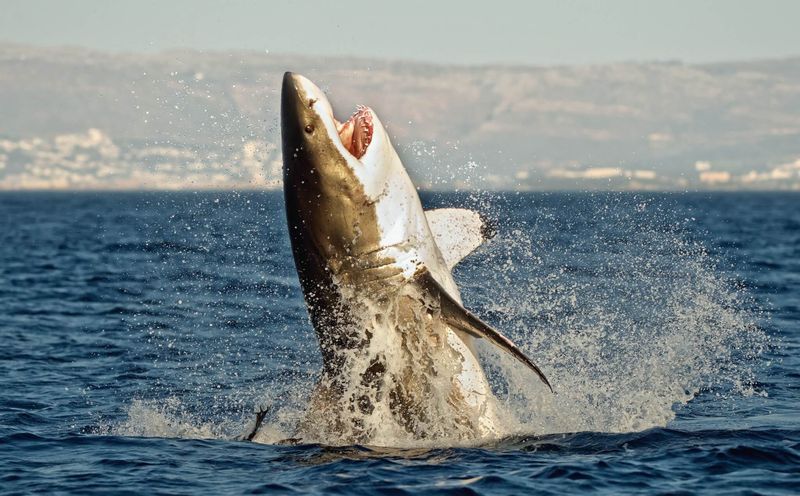
The interaction between the Atlantic’s largest great white shark and human activity is a complex relationship marked by intrigue and caution.
While these sharks are often perceived as threats to humans, actual encounters are rare, and most are driven by curiosity rather than aggression. Great whites tend to steer clear of human activity, preferring the open ocean’s solitude.
However, human activities such as fishing, boating, and tourism can inadvertently impact these majestic creatures.
By-catch in commercial fisheries poses a significant threat, as sharks may become entangled in fishing gear. Increased boat traffic also disrupts their natural behaviors, causing stress and altering migration patterns.
Understanding these interactions is crucial for developing effective conservation strategies. Education and awareness campaigns can help mitigate negative impacts, fostering coexistence between humans and great white sharks.
By promoting responsible fishing practices and advocating for marine protected areas, we can ensure the survival of the Atlantic’s largest great white, preserving a natural wonder that continues to captivate and inspire.
8. The Importance Of Conservation
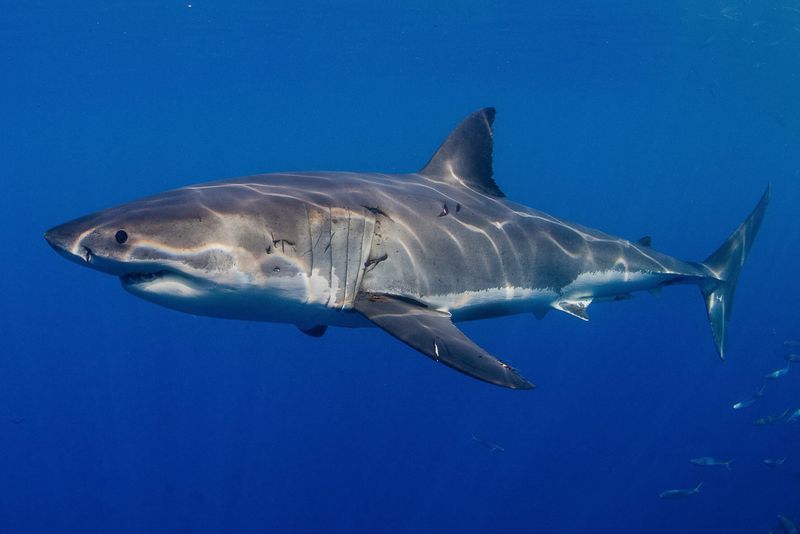
Conservation efforts for the Atlantic’s largest great white shark are of paramount importance. These magnificent creatures play a critical role in maintaining the ocean’s ecological balance, acting as top predators that regulate prey populations.
Protecting them ensures the health and diversity of marine ecosystems, benefiting countless other species and habitats.
Conservation initiatives often focus on research and education. By funding studies on shark behavior, genetics, and population dynamics, scientists can develop targeted strategies to protect these animals.
Public education campaigns also play a vital role in changing perceptions, debunking myths, and fostering a sense of shared responsibility for the ocean’s well-being.
Collaborative efforts among governments, NGOs, and local communities are essential for successful conservation. By establishing marine protected areas and enforcing sustainable fishing practices, we can create safe havens where great white sharks and other marine life can thrive.
These actions are crucial for preserving the Atlantic’s largest great white and ensuring that future generations can continue to marvel at these iconic predators.
9. Technological Advances In Shark Research
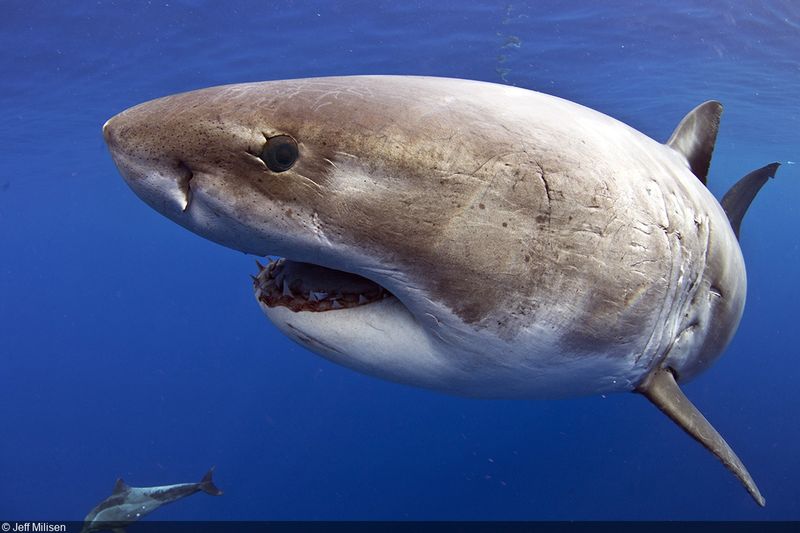
Technological advances have revolutionized the study of the Atlantic’s largest great white shark, offering unprecedented insights into their lives. Tools like satellite tags, acoustic sensors, and underwater drones provide real-time data on shark movements, behaviors, and interactions.
This technology enables scientists to track migration patterns, study feeding habits, and monitor environmental influences on shark populations.
These innovations have transformed our understanding of great white sharks, revealing complex social structures and intricate survival strategies.
By analyzing data from tagged sharks, researchers can identify critical habitats and assess the impact of human activities on these majestic predators. This knowledge is vital for developing effective conservation measures and ensuring the long-term survival of the species.
The integration of technology in shark research also promotes collaboration across disciplines. Marine biologists, oceanographers, and engineers work together to design and implement cutting-edge tools, pushing the boundaries of what we know about the ocean’s giants.
Such efforts are key to unlocking the mysteries of the Atlantic’s largest great white and fostering a deeper appreciation for these remarkable creatures.
10. Public Fascination And Media Influence
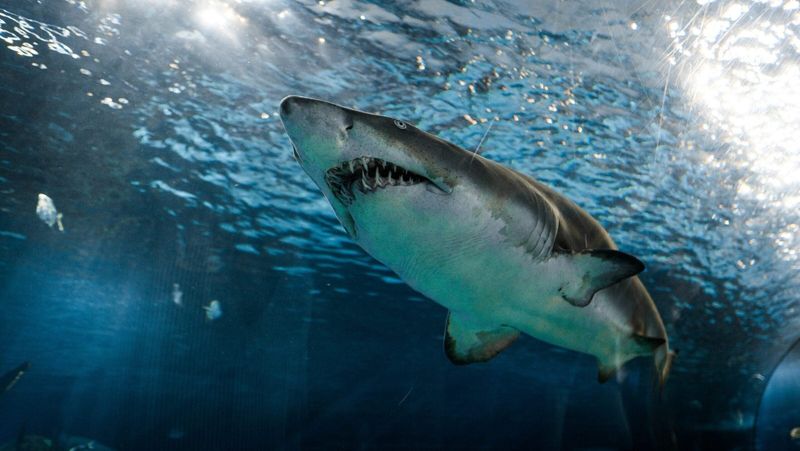
The public’s fascination with the Atlantic’s largest great white shark is a phenomenon fueled by media influence and human curiosity. Documentaries, news articles, and social media platforms often feature these majestic creatures, highlighting their size, power, and mysterious nature.
This exposure captivates audiences, sparking interest and debate about the role of great whites in the ocean’s ecosystem.
Media portrayal can influence public perception, shaping attitudes towards these apex predators. While some narratives focus on their fearsome reputation, others emphasize their ecological importance and the need for conservation. This duality reflects the complexity of human-shark relationships, balancing awe with responsibility.
Engaging the public through storytelling and visual imagery is crucial for raising awareness about great white sharks. By showcasing their beauty and significance, media can inspire action and support for conservation efforts.
This connection between the public and the Atlantic’s largest great white highlights the power of storytelling in bridging the gap between science and society, encouraging a more informed and compassionate view of these iconic creatures.
11. Myths And Misconceptions
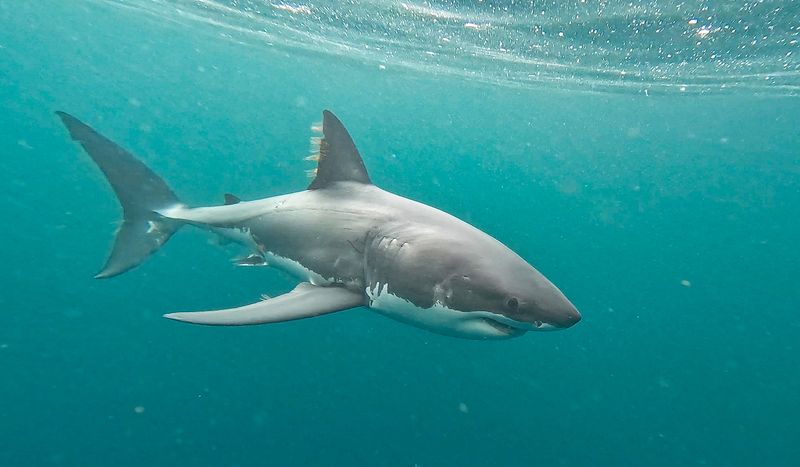
Myths and misconceptions about the Atlantic’s largest great white shark abound, often fueled by sensationalized media and fear.
One common myth is that great whites are constantly on the hunt for humans. In reality, these sharks are highly intelligent and discerning predators, rarely interacting with humans unless provoked.
Another misconception is that their size makes them invincible. While the largest great white is indeed formidable, these sharks face numerous threats from human activities and environmental changes. Understanding these challenges is essential for fostering empathy and support for conservation efforts.
Education plays a vital role in dispelling myths and promoting accurate information about great white sharks. By highlighting their true nature and ecological significance, we can shift perceptions and encourage a more balanced view of these remarkable creatures.
This knowledge empowers individuals to become advocates for shark conservation, ensuring the survival of the Atlantic’s largest great white and the preservation of the ocean’s intricate web of life.
12. A Future With The Atlantic’s Giants
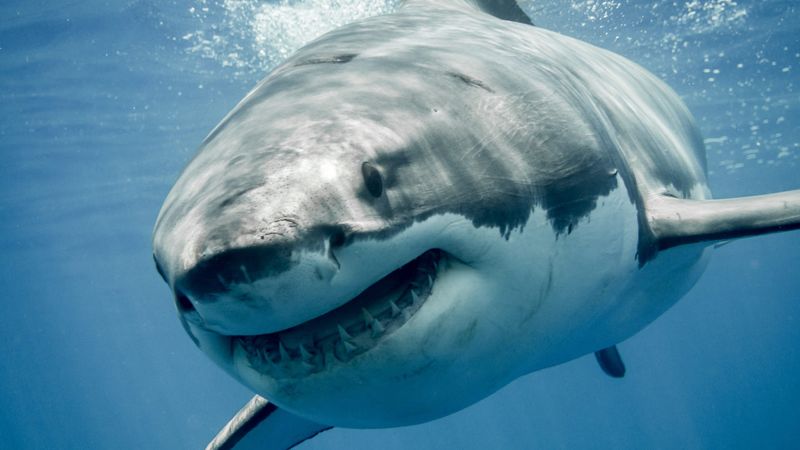
Envisioning a future with the Atlantic’s largest great white sharks involves a harmonious balance between human activity and marine conservation. By implementing sustainable practices and promoting awareness, we can ensure that these majestic predators continue to thrive in the ocean’s vast expanse.
Efforts to protect great white sharks must consider the broader context of ocean health. Addressing issues like pollution, climate change, and overfishing is crucial for creating a sustainable environment where sharks and other marine life can flourish.
Collaboration between governments, organizations, and communities is essential for achieving these goals, fostering a collective sense of stewardship for the ocean.
The future of the Atlantic’s largest great white sharks is a shared responsibility, requiring innovation, commitment, and compassion.
By embracing this vision, we can ensure that generations to come will have the opportunity to witness the awe-inspiring presence of these iconic creatures, celebrating their role in the ocean’s complex and beautiful ecosystem.
13. Unique Markings And Scars
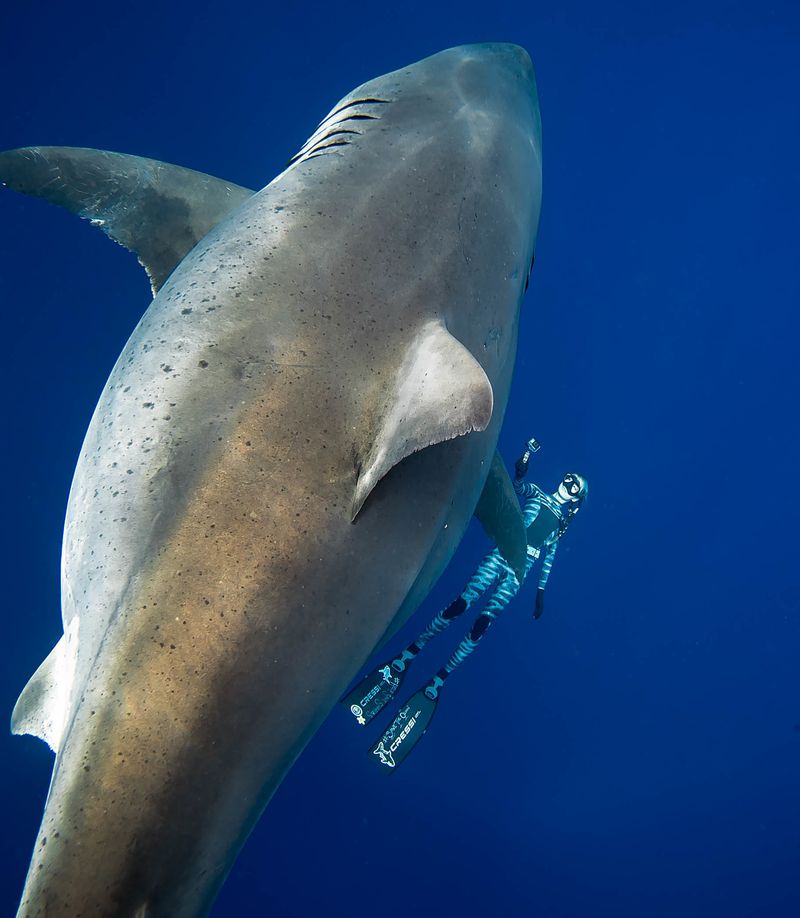
Every great white shark carries a story on its skin, and the largest great white ever recorded in the Atlantic is no exception. With scars from battles fought and won, this shark’s skin is a canvas of marine history. These unique markings not only speak of its survival but also aid researchers in tracking its movements.
Scientists utilize these patterns as natural identifiers, much like fingerprints in humans, to study migratory and behavioral patterns. Such research has provided invaluable insights into the life of these majestic creatures, enhancing our understanding of their role in the ocean ecosystem.
14. Unprecedented Size And Strength

The sheer size of the Atlantic’s largest great white shark defies imagination. Estimated to be over 20 feet long, its presence commands respect from every creature in the ocean. This behemoth’s strength is not just in its size but in its ability to traverse vast oceanic distances with ease.
Marine biologists are in awe of its powerful build, which allows it to prey on large marine animals, maintaining the balance in its ecosystem. This shark’s unmatched strength and size are a testament to its evolutionary success, captivating the imagination of those who study it.


